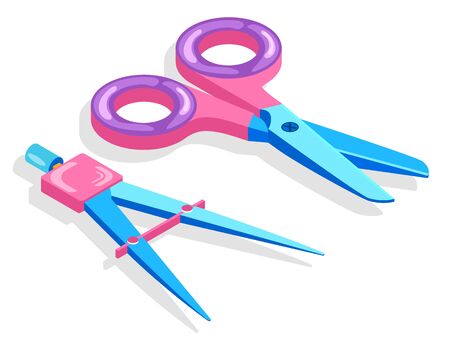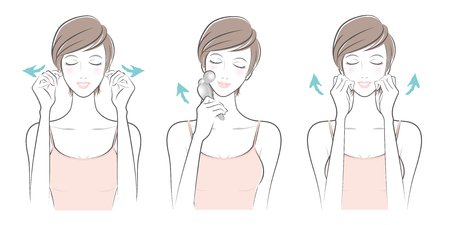1. Understanding the Impact of the UK Climate on Hair Tools
The ever-changing British weather can be both a blessing and a challenge, especially when it comes to caring for your hair styling tools. The UK is known for its humid air, frequent rainfall, and unpredictable temperature shifts—all of which can affect the performance and lifespan of your straighteners, curling wands, and hairdryers. Humidity encourages moisture build-up, leading to rust, corrosion, or even electrical faults if left unchecked. At the same time, damp conditions can encourage mould and bacteria on tool surfaces and attachments. These unique environmental factors make it essential to adopt a tailored approach to maintaining and cleaning your hair tools. By understanding how local climate influences wear and tear, you’ll be better equipped to protect your investment and ensure optimal results every time you style your hair.
2. Everyday Care for Your Hair Styling Tools
Living in the UK means your hair styling tools are exposed to fluctuating temperatures and varying humidity levels, which can impact their performance and longevity. Adopting gentle, everyday habits is essential for keeping your tools in peak condition, ensuring they continue to deliver salon-quality results while protecting your hair’s health. Here’s how you can easily weave proper tool care into your daily routine:
Essential Daily Habits
| Habit | Why It Matters | How to Do It |
|---|---|---|
| Unplug After Use | Prevents electrical hazards and extends tool lifespan. | Always switch off and unplug straighteners, dryers, or curlers immediately after use. |
| Allow to Cool Naturally | Reduces risk of burns and prevents heat damage to surfaces. | Place tools on a heat-resistant mat and let them cool down fully before storing. |
| Gentle Wipe-Down | Removes product build-up and dust from the UK’s indoor environment. | Use a soft, slightly damp cloth to wipe plates, barrels, or attachments after each use. |
Quick Tips for Optimal Tool Health
- Avoid wrapping cords tightly: Loosely coil cables to prevent internal wire damage.
- Store in a dry spot: Moisture in British bathrooms can lead to rust or mildew; keep tools in a cool, dry cupboard or drawer instead.
- Check plug sockets regularly: UK homes often have multiple adapters—ensure sockets are safe and not overloaded when plugging in styling tools.
Why Consistency Counts
A small investment of time each day makes all the difference. By following these simple habits, you’ll not only prolong the life of your hair styling essentials but also maintain healthier hair by avoiding excess residue or heat damage—a must for thriving in the UK’s ever-changing climate.

3. Deep Cleaning Techniques for Different Hair Tools
Keeping your hair styling tools in pristine condition is essential, especially with the damp and variable UK climate that can encourage product build-up and even mould growth. Each tool, whether a hairdryer, straightener, or curling wand, requires its own cleaning method to ensure safety and longevity. Below, we share expert guidance on deep cleaning your essential styling devices, along with British-relevant product recommendations to make the process both effective and gentle on your equipment.
Hairdryers: Refreshing Your Essential Blow-Dry Companion
Begin by unplugging your hairdryer and allowing it to cool completely. Remove the filter at the back—most modern models such as those from ghd or BaByliss offer easy access—and use a soft brush or an old toothbrush to gently remove dust and lint. For a deeper clean, wipe the exterior with a slightly damp microfibre cloth and a mild detergent like Ecover Multi-Action Spray, available widely across UK supermarkets. Avoid letting any moisture enter the vents. If you notice stubborn residue near the nozzle, dip a cotton bud in rubbing alcohol and gently clean around the edges.
Straighteners: Restoring Shine Without Damage
Straighteners accumulate residue from heat protectants and styling sprays, particularly in humid UK bathrooms. Unplug and cool your device completely before cleaning. Use a soft cloth lightly dampened with water or a little Neal’s Yard Remedies Organic Baby Soap diluted in warm water. Gently wipe down the plates—never submerge your straighteners in water or let liquid seep into any crevices. For tougher residue, a cotton pad moistened with isopropyl alcohol will help dissolve built-up grime without harming ceramic coatings commonly found on Remington or Cloud Nine models.
Curling Wands: Preserving Smooth Styling Performance
Curling wands can easily become sticky from styling products over time. After unplugging and cooling your wand, wrap a damp (not wet) microfibre cloth around the barrel and gently wipe away any residue. If needed, add a touch of Dr Beckmann’s Stain Devils (suitable for kitchen grease) diluted with water for stubborn spots—just ensure you follow up by wiping thoroughly with clean water to remove any cleaning agent traces. Always dry completely before storing to prevent rust or corrosion, especially important in areas prone to high humidity like coastal regions of the UK.
British-Approved Care Tips
For all tools, regular deep cleaning not only maintains performance but also prolongs their lifespan—a wise investment considering the cost of high-quality British and European brands. Make it part of your monthly routine for best results, especially during rainy seasons when moisture levels are high. By following these gentle yet effective techniques tailored for UK homes, youll keep your styling essentials fresh, hygienic, and ready for daily use.
4. Tackling Limescale and Moisture Issues
The UK’s damp climate can wreak havoc on your hair styling tools, leading to limescale build-up and persistent moisture problems. These issues not only impact the performance of your appliances but can also shorten their lifespan. Here’s how to protect your hair tools from these common challenges:
Preventing Limescale Build-Up
Limescale is a frequent concern, especially if you live in a hard water area. It often appears as a white, chalky residue on heated tools like straighteners or curling irons. To prevent limescale:
- Wipe Down After Use: Always allow tools to cool, then wipe plates and barrels with a soft, damp cloth to remove mineral deposits.
- Use Distilled Water: If your tool requires water (e.g., steam stylers), opt for distilled water to minimise mineral accumulation.
- Regular Deep Cleans: Schedule a deep clean at least once a month using vinegar or a limescale remover suitable for electronics (check manufacturer guidelines first).
Limescale Cleaning Guide
| Step | What to Do | How Often |
|---|---|---|
| 1 | Unplug and cool tool completely | Every use |
| 2 | Wipe with damp microfibre cloth | Every use |
| 3 | Treat plates/barrels with vinegar solution (1:1 water:vinegar) | Monthly |
| 4 | Dab dry and air out before storing | After each clean |
Managing Excess Moisture in Damp Weather
The UK’s humidity can leave your tools feeling clammy or cause internal moisture build-up. This can result in electrical faults or mould growth if not addressed:
- Avoid Bathroom Storage: Store styling tools in a dry area, away from steamy bathrooms to reduce exposure to excess moisture.
- Silica Gel Packs: Place silica gel sachets in your storage drawer or case—these help absorb lingering moisture.
- Adequate Drying Time: After cleaning, ensure every part of the tool is fully dry before plugging in or putting away.
- Ventilated Storage Solutions: Use breathable bags or cases instead of airtight containers for your hair tools.
Damp-Proofing Checklist for Hair Tools
| Action | Description |
|---|---|
| Avoid humid locations | No storage in bathrooms or near windowsills prone to condensation |
| Add moisture absorbers | Sachets or small dehumidifiers in drawers/cupboards help keep tools dry |
| Check cords and plugs regularly | Look for signs of damp or corrosion; never use if damaged |
| Aim for regular airing-out sessions | If possible, let your tools air out after each use before stowing them away |
Caring for your hair styling tools with these methods will help maintain their performance and safety throughout the ever-changing British weather, keeping your kit in tip-top condition year-round.
5. Safe Storage Solutions for British Homes
Properly storing your hair styling tools is just as important as regular cleaning, especially given the unique climate and living spaces found in the UK. Bathrooms here often contend with high humidity and limited ventilation, which can accelerate wear on electrical devices and create potential safety hazards. To keep your styling tools performing at their best and to maintain a safe environment, consider the following expert tips tailored for British homes.
Choose Dry, Well-Ventilated Areas
After using your straightener, curling wand, or hairdryer, always allow them to cool completely before storage. Avoid leaving them on damp countertops or window sills where condensation gathers. Instead, select a dry cupboard or drawer outside of the bathroom if possible, or invest in wall-mounted holders designed for heated appliances to improve air circulation and reduce moisture exposure.
Avoid Overcrowding Sockets
Many UK homes feature limited plug sockets in bathrooms and bedrooms. Resist the urge to leave multiple styling tools plugged in at once, as this can increase the risk of electric shocks and fire hazards. Use extension leads with built-in surge protection only when absolutely necessary, and unplug each device after use.
Use Heat-Resistant Mats and Pouches
Heat-resistant mats are invaluable for preventing heat damage to your vanity surfaces while your tool cools down. For added protection during storage or travel, use heat-proof pouches that shield both your appliance and surrounding fabrics from residual heat—especially important in compact British bedrooms where space is tight.
Regularly Check Cords and Plugs
The UKs variable temperatures and humidity can degrade cables over time. Inspect cords regularly for any signs of fraying or damage, and ensure plugs remain free from dust and moisture build-up. Store cords loosely wrapped rather than tightly wound to avoid internal wire breakage.
By adopting these mindful storage habits, you’ll not only extend the lifespan of your beloved styling tools but also safeguard your home against preventable accidents—creating a more serene and secure beauty routine whatever the British weather brings.
6. When to Repair or Replace Your Tools
Recognising the Signs: When Your Styling Tools Need Attention
Even with the best care, hair styling tools can show signs of wear—especially in the UK’s often damp and variable climate. If you notice your straighteners or curling tongs taking longer to heat up, producing uneven heat, emitting strange smells, or showing visible damage (such as frayed cords or cracked plates), it’s time to consider professional repair or replacement. Persistent residue build-up that won’t shift after cleaning may also signal deeper mechanical issues.
Repair vs Replace: Making an Informed Choice
If your appliance is still under warranty or only slightly malfunctioning, opting for a professional repair can be both sustainable and cost-effective. However, if the tool is older, repeatedly faulty, or poses any safety risks—like exposed wires or overheating—it’s generally safer and more economical in the long run to invest in a new one. Don’t ignore electrical faults; these can be hazardous, especially in the humid UK environment.
Finding Trustworthy Repair Services in the UK
When seeking repairs, always use reputable UK-based services with certified technicians. Check reviews on trusted sites like Trustpilot or ask your salon for recommendations. Many brands have authorised repair centres—check their official websites for details. If you do opt for a new tool, consider recycling your old device at local council e-waste facilities or through retailer take-back schemes to minimise environmental impact.
By staying attentive to changes in performance and safety, and choosing skilled UK professionals when needed, you’ll help ensure your styling routine remains smooth—and your hair tools last longer despite the challenges of British weather.


